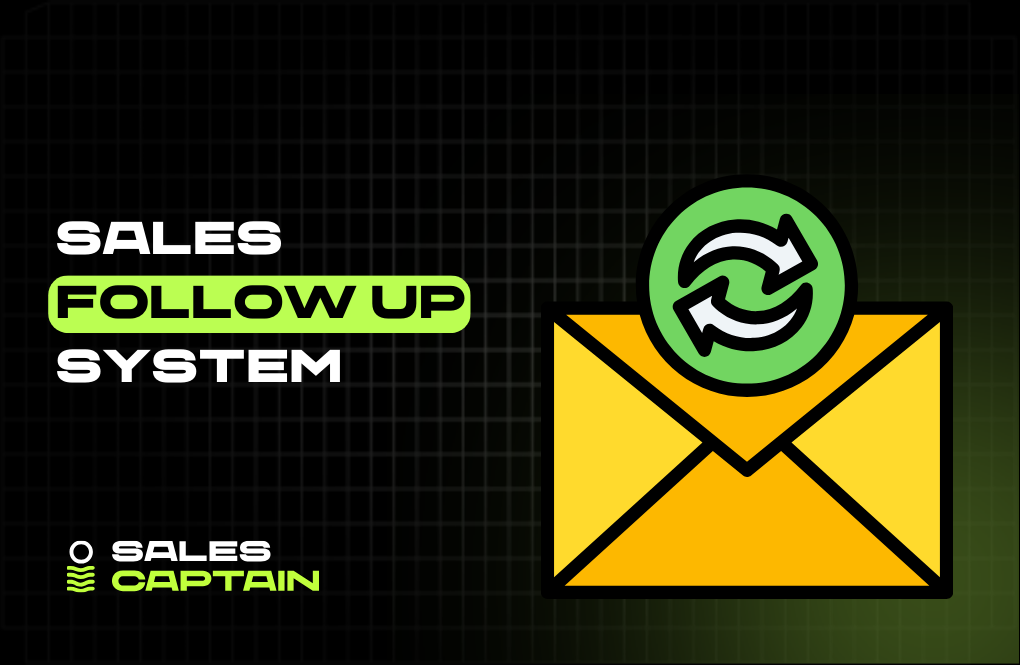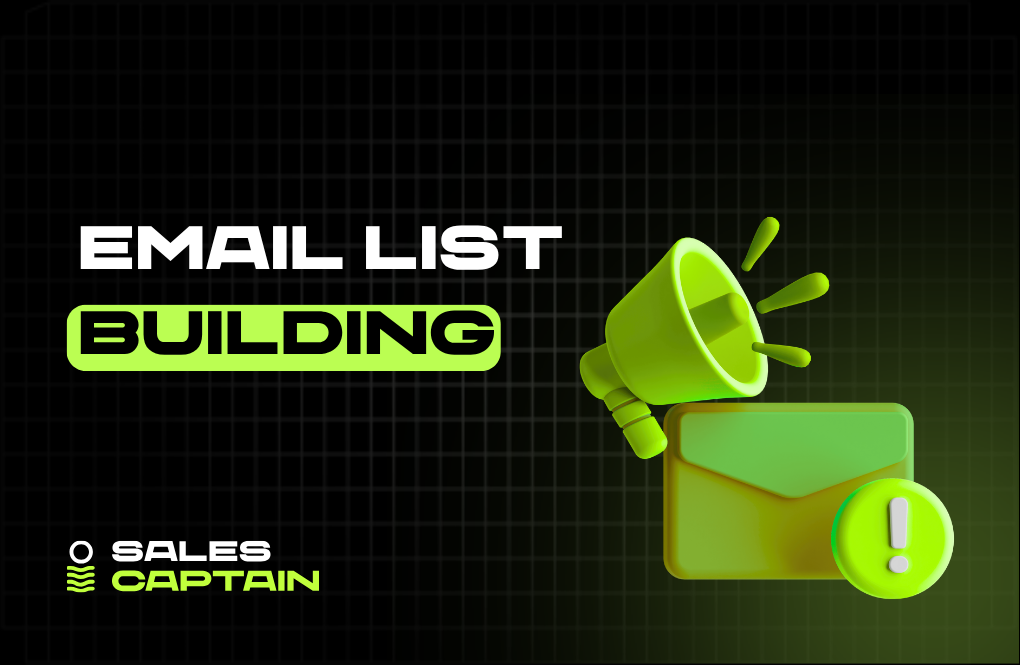

How to Get More Sales Meetings with Qualified Prospects


1. Plan & Prepare Your Outreach
Define your Ideal Customer Profile (ICP)
Before you send a single email or make a call, you need to know exactly who you're going after. That’s where the ICP comes in. Think of it as your blueprint for prospecting. It’s not just demographics or firmographics. It’s behavior, goals, team structure, tech stack, and pain points.
For example, if you sell marketing automation software, targeting a “mid-sized company” isn’t enough. You need to know if they’re running manual email campaigns, whether their team has a dedicated ops role, and if they’re actively hiring for demand gen. That’s how you get specific enough to connect.
Research prospects deeply: company, role, triggers, pain points
Here’s the thing: generic outreach doesn’t work anymore. If you’re reaching out without knowing what your prospect cares about, you’re just another noise in their inbox. Real research changes the game. Look into their recent funding, team changes, product launches, and even a quote from their CEO in a press release.
Take five extra minutes. Look at their role specifically. A VP of Sales and a Sales Enablement Manager at the same company want different things. One’s thinking revenue, the other’s thinking training and tools. Align your outreach accordingly.
Align outreach timing with behavior and intent signals
Timing isn’t everything, but it’s close. If someone just posted a job opening related to your product, they’re probably open to hearing from you. Same if they viewed your website or downloaded a guide. These signals matter.
Use tools like Bombora, 6sense, or even website analytics to spot intent. Align your message to those moments. A cold email that hits during a buying window feels warm. A well-timed call isn’t an interruption; it’s helpful.
2. Craft a Compelling Pitch
Personalize messages to each prospect.
You’ve probably heard it a hundred times, but it’s still true. Personalization wins. The catch is, most people are doing surface-level personalization. First name, company name, maybe a job title. That’s not enough.
Real personalization is about relevance. Mention a recent podcast they were on. Reference a specific initiative they’re leading. If they just posted on LinkedIn about scaling their team, tie your value prop to that growth. Make it feel like you wrote the message for them, not just swapped out a few tokens in a template.
It takes more effort. But it also gets replies.
Use targeted success stories and customer wins.
Prospects don’t want to be sold to. They want to see proof. When you share a quick story about how you helped someone just like them, it makes your pitch believable.
Don’t just say, “We helped Company X increase sales.” Say, “When Acme Inc.’s sales team switched to our platform, they cut admin time by 40 percent and booked 22 percent more meetings in Q2.” That’s specific. It’s also easy to visualize. Bonus points if the company you reference is in a similar industry or has a similar challenge.
These aren’t just case studies. They’re ammo for your outreach.
Integrate high-quality content to build credibility
No one wants to talk to a rep who sounds desperate or uninformed. Sharing valuable content flips the script. It positions you as a guide, not a seller.
This could be a short guide, a sharp LinkedIn post from your CEO, or a one-minute video showing how your product solves a common problem. The point is, show up with value, not just a request for time.
And don’t overthink the format. Quality matters more than polish. Relevance matters more than flash.
3. Diversify & Sequence Outreach Channels
Use a multi-channel cadence: email, LinkedIn, phone
Relying on just one channel is like fishing with one line when you’ve got an entire net. People respond differently depending on where they spend their time and how they like to communicate. That’s why a multi-channel cadence works. You’re showing up in more than one place, which increases your chances of getting noticed.
Start with an email, follow up on LinkedIn, then make a call. Or flip the order depending on your audience. The point isn’t to be annoying. The point is to be visible and helpful wherever your prospect already is.
Mixing it up also keeps you from sounding like a robot. One message format doesn’t fit all channels. A short, sharp LinkedIn message feels different from a thoughtful email, and both can complement a follow-up call.
Combine cold calls with value-driven campaigns.
Cold calls get a bad rap, but when paired with value, they can still work wonders. The key is what comes before and after. If your prospect has already seen your name in their inbox or noticed a helpful post from you on LinkedIn, that call doesn’t feel so cold anymore.
Instead of jumping right into a pitch, start by referencing something useful you’ve already shared. Maybe you sent them a guide last week or liked one of their posts. That tiny bit of context lowers their guard and makes the conversation feel more natural.
Calls are still powerful when done with respect and a clear reason. Combine them with value, not volume.
Share resources with each touchpoint.
Every time you reach out, ask yourself: Did I give them something useful? Resources don’t have to be long whitepapers. A quick blog post, a short video, or even a customer quote can show that you’re not just chasing a meeting. You’re trying to be helpful.
It also makes your follow-ups feel more like a conversation and less like nagging. Instead of “Just checking in,” you’re saying, “Thought this might be useful for your team.”
When you lead with value, people are more likely to engage. Simple as that.
4. Optimize Cold Calling Effectiveness
Regularly update and test your calling script.
Most sales scripts get written once, then forgotten. That’s a problem. If you're still using the same cold call opener from six months ago, chances are it's outdated. Maybe the market shifted. Maybe the pain points evolved. Maybe your tone just sounds off now.
Scripts should be living documents. Tweak them based on what works and what gets ignored. Pay attention to objections. Watch where prospects get curious or where they check out. Even small changes, like swapping an opening question or adjusting your pacing, can make a big difference.
Testing isn’t optional. It’s how you keep your edge.
Start with permission-based openers.
Nobody likes being ambushed. That’s why permission-based openers work so well. You're showing respect right from the start.
Something simple like, “Did I catch you at a bad time?” or “Mind if I take 30 seconds to explain why I’m calling?” doesn’t just soften the interaction. It sets a tone. You’re not steamrolling into their day. You’re asking for a moment, and that makes people more likely to listen.
The goal isn’t to ask for permission forever. It’s to create space for a real conversation.
Master objection handling
Objections aren’t rejections. They’re just signals that something needs clearing up. If someone says, “We already have a vendor,” that’s not a no. That’s an invitation to ask, “What’s working well for you right now?”
Great reps don’t bulldoze through objections. They lean in with curiosity. They unpack the concern and find out what’s underneath. And they practice responses that feel human, not scripted.
Handling objections is a skill. And like any skill, it gets sharper with practice and feedback.
5. Use Sales Meetings as Interactive Training & Engagement
Conduct role-plays to sharpen pitches and objection handling
Sales meetings don’t need to be passive status updates. Use them as practice grounds. Role-plays may feel awkward at first, but they’re insanely effective. When reps act out real scenarios, they get sharper fast.
Don’t script every word. Just pick a scenario, like calling a CFO or handling a price objection, and have two reps go back and forth. Then break it down. What worked? What missed? What could be tighter?
It turns meetings into learning sessions, not just reporting sessions.
Review current events, negotiation tactics, and team wins
Your team is selling in a moving landscape. Use part of your sales meetings to review what’s happening right now. A new competitor pops up? Talk about it. Market shift? Discuss how to adjust the pitch.
And don’t skip the wins. Break down recent deals. Who closed it? How did they get the meeting? What tactics worked? It’s not just about celebrating. It’s about spreading what’s working so others can apply it too.
Invite subject matter experts to motivate and train
You don’t have to be the only voice in the room. Bring in someone from product, marketing, or even a customer. A quick 15-minute session from someone with deep expertise can fire up the team and give them fresh talking points.
It also breaks the routine. And sometimes, that outside perspective is what sparks a new idea or a better pitch.
Include micro-trainings and goal-setting sessions.
Don’t wait for quarterly kickoffs to train. Use short bursts of training every week. Teach one concept. One opener. One negotiation move. That’s it. Then have reps apply it right away.
End each meeting with a mini-goal. It could be something small like “book three meetings using this new intro” or “test this CTA in five emails.” These micro-goals keep the team focused and give you something to review next time.
6. Motivate Prospects with Value
Build rapport before making your ask.
Jumping straight into a pitch is the fastest way to lose someone’s attention. Instead, take a moment to connect. It could be something as simple as commenting on a recent post they shared or mentioning a shared connection. You’re not stalling, you’re making yourself more human.
People respond better when they feel like you actually see them, not just their job title. That little bit of rapport builds trust, and trust makes everything else easier.
Use follow-up templates that provide real value.
“Just checking in” doesn’t cut it anymore. If your follow-up feels like a nudge with no purpose, it’ll get ignored. Your templates should always include something useful.
Try, “I found this article about your industry’s shift toward automation. Thought it might be helpful given your role.” Or, “Here’s how another VP of Sales in fintech handled X problem, we thought it might be relevant.”
Each touch should feel like a favor, not a favor request.
Share customer insights and relevant industry content
You have access to insights your prospects probably don’t. Share them. Whether it’s data from your customer base, lessons from recent deals, or commentary on industry trends, this kind of content builds authority.
Even a short note like, “A few companies in your space are shifting to X approach. We’re seeing early success when they do Y,” can open a door. When you bring value like this, prospects start seeing you as a resource, not just a rep.
7. Track Progress & Refine Tactics
Measure response rates by channel, timing, and messaging
If you’re not tracking what’s working, you’re just guessing. Look at the data. Which channels get the most replies? What times do people tend to open your emails or answer calls? Which message angles actually spark interest?
This isn’t just about metrics, it’s about learning. Even small insights can drive big improvements in how you approach outreach.
Use this info to tighten your cadence, adjust timing, and double down on what’s converting.
Improve lead distribution to ensure speed and fit.
Not all leads are created equal. And not every rep should chase the same ones. Smart lead distribution makes a difference. It’s about matching speed with skill and relevance.
Make sure your best-fit leads go to reps who can follow up quickly and have the right context. Delays kill momentum. So does mismatching a high-value lead with someone who’s not equipped to close it.
Speed plus fit equals more meetings.
A/B test email subject lines, content, and call strategies
Testing isn’t just for marketers. Sales teams should constantly be running small experiments. Try different subject lines. Test two opening lines on calls. See which type of CTA gets more meetings booked.
Keep it simple. Run one variable at a time, measure the result, and then decide if it’s worth rolling out. These little tweaks add up. Over time, they can completely shift your reply rate.
8. Generate Internal Momentum
Run structured weekly and bi-weekly sales meetings
Sales meetings shouldn’t be something people dread. When they’re structured right, they actually fuel the team. Keep them consistent, same time, same format, and make sure every minute serves a purpose.
Don’t turn them into laundry lists. Focus on action. Use this time to tighten strategies, review performance, and realign the team. And make sure it’s not just leadership talking at the group. Get everyone involved.
Include agenda items: forecast reviews, pipeline metrics, role-plays, and goal check-ins.
A strong agenda keeps meetings on track. Start with a quick look at the forecast. Then dive into pipeline numbers. Who’s close to closing? Where are deals getting stuck?
Follow that up with role-plays and objections the team is hearing in real time. End with goals. What’s each rep committing to this week? This kind of structure keeps meetings sharp and focused.
Make meetings interactive and skill-building
If your team’s zoning out, something’s off. Build interaction into every meeting. Ask people to share wins or tough objections. Do live call reviews. Create a space where people learn, not just listen.
No one wants to sit through a monologue. Make every rep feel like they’re part of the room, not just sitting in one.
Focus on inclusive team decisions and engagement.
Your team has frontline insight that leadership might miss. Pull that knowledge in. Ask them what messaging is landing, what tools they need, and what prospects are saying.
When reps feel heard, they’re more engaged. They also come up with ideas leadership wouldn’t have thought of. Use that. Build a culture where voices matter, and results follow.
9. Scale with Tools & Automation
Use platforms like PhoneBurner to automate multi-channel outreach
Tools like PhoneBurner can take your outreach from slow and scattered to fast and consistent. It helps you hit more leads in less time without sacrificing personalization. That’s the key. Automation is useless if it feels robotic.
Whether it’s dialing faster or sending timed emails, the goal is to scale your effort while keeping things human. Use the tool, but don’t lose your voice.
Automate follow-ups, lead assignment, and status updates
Sales teams waste too much time on admin. Automate it. Set rules for lead routing based on industry, size, or urgency. Schedule follow-up emails right after a call so you don’t forget. Use CRM triggers to move deals along without constant manual updates.
Less time in spreadsheets means more time talking to prospects. That’s where the deals happen.
Use AI tools to research, personalize, and streamline outreach
AI isn’t about replacing reps. It’s about making them faster and smarter. Use AI to pull company insights, summarize LinkedIn activity, or write a first draft of a message you can tweak.
These tools help you scale the hard parts of prospecting, the research, the writing, and the tracking. Just remember to keep the human touch. AI should make you sound more relevant, not less real.
10. Get More Meetings via Thought Leadership
Publish quality content to attract inbound interest
People trust experts. When you or your company shares genuinely useful content, prospects come to you. This doesn’t mean cranking out boring blog posts. It means creating stuff that actually helps people do their job better.
Think sharp takes on industry shifts, step-by-step guides, or behind-the-scenes lessons from your team. The more you share what you know, the more people want to talk to you.
Engage on LinkedIn through posts and comments.
You don’t need a huge following to make an impact on LinkedIn. Just show up consistently. Comment on relevant posts. Share quick insights. Start conversations instead of just broadcasting.
When people see your name and hear your voice regularly, they remember you. Then, when you reach out, you’re not a stranger. You’re that rep who always adds something valuable.
Offer insights and value during initial interactions
Even your very first message should teach them something. Maybe it’s a trend you’re seeing, a question you’ve been hearing from others in their role, or a quick framework you’ve seen work.
When you lead with insight, you create curiosity. That’s what opens the door to meetings, not gimmicks or desperation.
Frequently Asked Questions About Getting More Sales Meetings
A sequence of 5 to 7 touches across multiple channels usually strikes the right balance. It keeps you top of mind without overwhelming the prospect. Spread them out over a couple of weeks and vary your approach each time.
If you’ve tried 6 to 8 times with no response, it’s probably time to pause or pivot. Don’t keep hammering the same message. Try a new angle or wait until you have a more compelling reason to reach out.
There’s no universal answer. Some prospects prefer the clarity of email, while others respond better to a quick call. Test both. Track which channel your ideal customers engage with first, then lead with that.
Real, helpful content. Short success stories, quick case studies, sharp LinkedIn posts, and relevant blog articles all work. Focus on content that solves a problem or answers a question your prospect is already thinking about.
Start with performance metrics like pipeline and forecast. Add role-play or objection handling to build skills. Share a team win or quick tip that others can apply. Keep it active and avoid turning the meeting into a one-way update.
Bring something new to the table. Share a new piece of content, reference a recent change in their company, or simply acknowledge that the timing wasn’t right before. The key is to give them a reason to reconsider now.
Personalize your next five messages more deeply. Go beyond the name and role. Mention a specific initiative, LinkedIn post, or company update. You’ll stand out immediately and increase your chances of a response.
RELATED ARTICLES
Check out more articles on our blog!
RELATED ARTICLES
Lorem ipsum dolor sit amet, consectetuer adipiscing elit, sed diam nonummy nibh euismod tincidunt ut laoreet dolore magna aliquam erat volutpat.




.jpg)





